Oxygen Steelmaking Technology Committee Activities
The OSTC met 6 May 2025 at AISTech 2025, Nashville, TN, USA.
The following officers were elected:
- Chair: Matthew Wilson / Cleveland-Cliffs Indiana Harbor
- Vice Chair: Fernando Guerra / Stelco Inc.
- Papers Chair: David Runner / Opta Group LP
- Membership Chair: Aaron Strelbisky / Tallman Technologies Inc.
- Young Professional Chair: Mariam Sidawi / Hatch

The OSTC 11–12 February 2025, Merrillville, Ind., USA
On 11 February, the OSTC toured the #4 Steel Producing facility at Cleveland-Cliffs Indiana Harbor. The tour included the basic oxygen furnace (BOF) operating floor, hot metal desulfurization station, BOF operating pulpit and the ladle treatment station. That evening, the members joined the Midwest Member Chapter dinner meeting in Merrillville, Ind., USA.
On 12 February 2025, the OSTC held its business meeting. The technical discussion focused on raw materials programs.
Presentations:
“Cleveland Cliffs – Indiana Harbor Works, #4 Steel Producing Raw Materials Improvements,” by Matt Wilson, Cleveland-Cliffs Indiana Harbor Works #4 Steel Producing.
“ Scrap Quality Management at Stelco,” by Fernando Guerra and Lewyn Valladares, Stelco Inc.
“ Lime Blend Calculations and Optimization at SSAB Raahe,” by Seppo Ollila, SSAB Raahe.
A safety roundtable was then held, during which members relayed new safety procedures and technologies being implemented in the industry. A decarbonization roundtable was also held where members discussed the progress of BOF facilities implementing new technology and operations to become more carbon-friendly.
The 2025 Charles H. Herty Jr. Award winner was announced. The award will be presented during AISTech 2025.
The roles for the officers were reviewed and a call for nominations was made to encourage members to participate as an officer.
The discussion then turned to session planning for AISTech 2025. Fernando Guerra, papers chair, reviewed the program, noting that the OSTC will have five sessions on BOF operations and technology. One session will be a panel discussion on the production and usage of smelted iron for BOF production.
The business portion of the meeting concluded with an a discussion on potential study tour plans. The OSTC, who were the originators of the AIST Study Tour program, are considering a study tour in India as the country now produces 150 million tons of steel per annum and have multiple modern BOF facilities.
The OSTC plans to have its fall meeting in October to coincide with the AIST European Steel Forum in Spain.

The OSTC met 7–8 November 2024, Duisburg, Germany
The OSTC’s business meeting was hosted by thyssenkrupp Steel on 7 November. Robert Shepherd, OX1 steelmaking manager, presented an overview and update on the thyssenkrupp facility in Duisburg and their upcoming plans for transforming the plant toward climate neutrality. Following his presentation was a technical discussion with questions and answers on the topic of latest technologies in BOF steelmaking:
Guenther Staudinger, Danieli Corus, presented on a basic oxygen furnace (BOF) shell temperature monitoring system.
Bernhard Voraberger, Primetals Technologies, presented “BOF of the Future, Green and Fully Automated.”
Jens Kempken, SMS GmbH, presented “Automatic Scrap Classification and the Opportunities for Improvements of the Scrap Ecosystem in Meltshops.”
Mike Strelbisky, Tallman Technologies, presented on in-furnace taphole monitoring for electric arc furnaces, BOF twisted tips for improved BOF processing, and reducing CO2 emissions in BOF steelmaking through the use of indirect and focused post-combustion technology.
The group then moved into a review of the BOF sessions for AISTech 2025. Four sessions have been organized: BOF Processing, BOF Practices, Iron Smelting Practices for BOF Steelmaking, and Decarbonization. A fifth session is being organized as an operators’ panel discussion with a topic to be determined.
Volunteers were then taken for reviewing the candidates for the 2025 Charles Herty Award.
The meeting discussion ended with a review of the BOF Roundup printed in the January issue of Iron & Steel Technology and a roundtable discussion on ideas for the next BOF Study Tour. The OSTC began the AIST Study Tour program in 2007 but has not conducted a tour since their Korea/Taiwan tour in 2019. Three regions were suggested: Turkey, India and France/Spain. Tour routes for those regions will be proposed to the committee for a vote as to the region of greatest interest and to gauge the level of support from the producer members of the committee.
The meeting concluded with a dinner hosted by thyssenkrupp.
On 8 November, the OSTC visited both oxygen steelmaking shops at thyssenkrupp Steel. A tour of the BOF facility at Bruckhausen started the day. Afterwards, the members visited the entire steelmaking facility at Beeckerwerth. The tour included the hot metal treatment area, BOF operating pulpit, ladle metallurgy station and RH degasser treatment station.
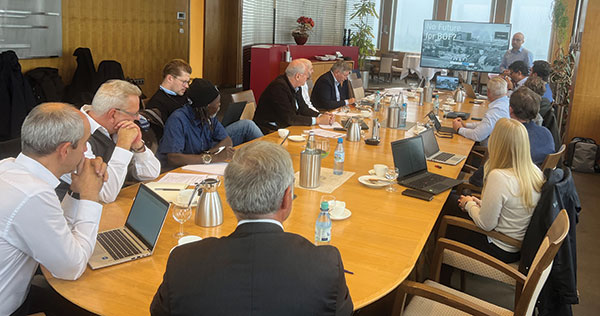
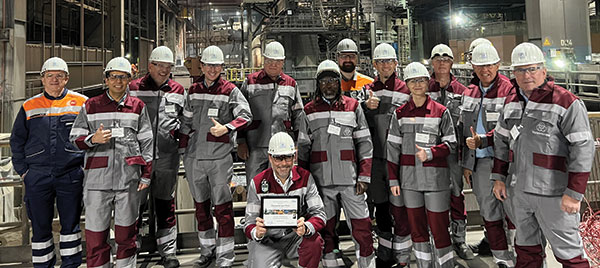 Frank Ahrenhold was presented with a plaque of appreciation for hosting the OSTC’s tour of thyssenkrupp Steel.
Frank Ahrenhold was presented with a plaque of appreciation for hosting the OSTC’s tour of thyssenkrupp Steel.The OSTC met 21–22 February 2024, Cuyahoga Falls, Ohio, USA.
The OSTC met on 21 February 2024 for a tour of the oxygen steelmaking facilities at Cleveland-Cliffs – Cleveland East. Bobby Wong, division manager — No. 1 Steel Producing, greeted the group and provided an overview of the primary steelmaking facilities at Cleveland-Cliffs – Cleveland Works. Located in downtown Cleveland, Ohio, No. 1 Steel Pro-ducing (formerly known as the “Republic” or east side) with its neighbor No. 2 Steel Producing (formerly known as the “J&L” or west side) have the capacity to produce over 4 mmtpy of steel from the two blast furnaces and two BOF facili-ties. No. 1 Steel Producing, alone, has the capacity to produce 2.3 mmtpy. The steelmaking facility contains two 265-ton BOFs, a ladle metallurgy furnace (LMF) and an RH degasser, which feed a slab caster that can produce 9-inch slabs anywhere from 34 to 73 inches wide. The tour included visits to the hot metal desulfurization area, the BOF operating pulpit and the LMF/RH degasser operating pulpit.
On 22 February 2024, the business meeting was held where participation in the meeting was available in-person or virtu-ally as the OSTC has a strong European membership. A review of membership and OSTC leadership positions was held, as the committee is seeking volunteers from within the OSTC membership for the roles of membership chair and Young Professional chair. A roundtable discussion on safety practices and technologies was conducted. Attendees were given the opportunity to bring up ideas for improving safety within steelmaking. A technical discussion on vessel slopping control followed.
Representatives from Cleveland-Cliffs Inc., United States Steel Corporation and Stelco Inc. presented the procedures used at their facilities to control vessel slopping incidents. ArcelorMittal Dofasco G.P. then provided a presentation on the robotic technology they use for boiler tube inspection in the KOBM hood system. The robotic technology saves them time and increases the coverage and efficiency in finding boiler tubes that are wearing thin.
The meeting concluded with a discussion on the OSTC sessions planned for AISTech 2024. The OSTC has four sessions organized and a panel discussion on reducing CO2 in the BOF.

The OSTC met 12–13 October 2023, Košice, Slovakia.
With the international diversity of the OSTC, the meeting in Europe was arranged to provide the regional BOF steelmakers the opportunity to meet in a face-to-face environment with contributions from the Americas via a virtual platform. Fernando Guerra, membership chair, led the meeting as the chair attending in person. Sixteen steelmakers and steel industry professionals attended the meeting in person with another 13 attending virtually. A roundtable discussion on safety was held in which members could contribute new safety policies and new safety procedures implemented at their facilities. Technical presentations were then given on the subjects of procedures for changing raw material inputs and how these changes impact scrap availability and impurity elements such as [S], [P] and [Si] contents.
“Stelco Procedures for Changing Raw Materials,” by Fernando Guerra, Stelco Inc.
“Tata IJmuiden Changing Raw Material Issues,” by Hans Pronk, Tata Steel Europe.
“TKSE Transformation Progress and Changes in Raw Material,” by Dominik Sobiech and Frank Umek, thyssenkrupp GmbH.
“USSK Desulf Scrap FPC Lance Usage,” by Marek Lukacin, U. S. Steel Košice.
“voestalpine Linz GmbH Phosphorus Program,” by Martin Egger.
Following the technical presentations and subsequent discussion, volunteers were taken for the 2024 Charles Herty Award evaluation. The committee then reviewed the AISTech 2024 OSTC technical sessions.
The meeting concluded with a tour of the two steelmaking shops at U. S. Steel Košice on 13 October 2023. A special note of appreciation goes to Marek Lukacin and Marcel Novak for hosting the committee attendees to a dinner in the old town of Košice on 12 October 2023.
On 16 October 2023, a small group of OSTC members traveled to voestalpine Linz to have a technical discussion and tour of the BOP facilities. Martin Egger and Magdalena Jetzinger welcomed the members for the tour, which included the hot metal area, LD operations pulpits, and secondary metallurgy facilities.
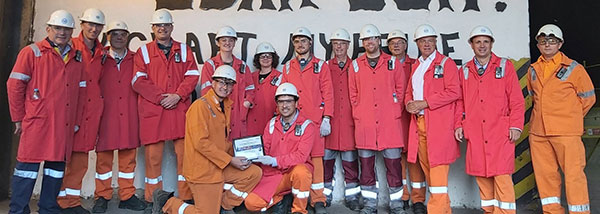
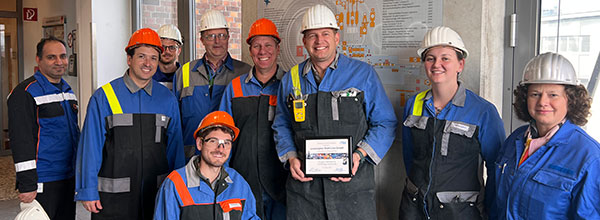
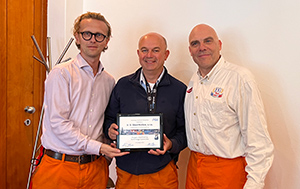
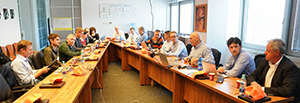
The OSTC met 9 May 2023, Detroit, MI, USA.
The following officers were elected:
Chair: Dominik Schöne - Dillinger Hüttenwerke AG
Vice Chair: Steve Gillgrass - RHI Magnesita
Papers Chair: Matthew Wilson - Cleveland-Cliffs Indiana Harbor
Membership Chair: Fernando Guerra - Stelco Inc.
The OSTC met 26–27 September 2022, Dillingen, Germany.
The OSTC held the very first AIST Technology Committee meeting in Europe. The OSTC is the most internationally active Technology Committee, having initiated the AIST Study Tour program, as well as having all officers being located outside of the U.S. in 2021–2022.
In the planning of this particular meeting, the European OSTC members had asked that a committee meeting be held in Europe with the North American members connected virtually.
Dominik Schöne, manager meltshop at Dillinger Hüttenwerke and the OSTC vice chair, organized and hosted the OSTC meeting at the Dillinger Hüttenwerke Guest House in Dillingen, Germany. Sixteen members and guests from European steel producers and technology suppliers attended the meeting in person while another 18 members attended virtually. Schöne welcomed everyone who attended and thanked those who traveled from Austria, Finland, the Netherlands, Germany and Canada. Noting that the meeting was required to follow the AIST Antitrust Guidelines, the members began the meeting with a discussion on safety policies being used by members throughout the world.
The technical discussion of the meeting focused on safety procedures for scrap handling and safety procedures for recycling steel into the converter. SSAB Raahe, Dillinger and voestalpine all presented on their facilities’ procedures while U. S. Steel – Gary Works, Stelco, Rio Tinto and Ternium S.A. contributed their procedures via virtual connection. thyssenkrupp provided an overview of their contribution to climate neutrality.
Steve Gillgrass, OSTC paper chair, reviewed the abstracts selected for the OSTC sessions for AISTech 2023. Sessions are being organized on raw materials, process modeling, process metallurgy and blowing practices. Volunteers were taken for session chairs. Volunteers were also taken for the review of the Charles Herty Award nominations.
Günther Staudinger provided an update on the revisions to AIST Technical Report No. 32 and a discussion was held regarding potential regions for the next Basic Oxygen Furnace (BOF) Study Tour.
The 2023 BOF Roundup was discussed and members volunteered to expand the roundup to include Germany and Austria. An overview followed of the AIST project to road map the decarbonization of the iron and steel industry by 2050. Members were asked to provide feedback to the baseline being developed on current technologies being used.
The meeting concluded with a dinner hosted by Dillinger Hüttenwerke. The next day, the members toured the Dillinger BOF steelmaking facilities, the degasser area and a walking tour of the No. 6 Continuous Caster, which casts the world’s thickest slab at 600 mm.
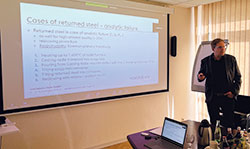

The OSTC met 17 May 2022, Pittsburgh, PA, USA.
The following officers were elected:
Chair: Geoffrey Brooks / Swinburne University
of Technology
Vice Chair: Dominik Schone / Dillinger Hüttenwerke AG
Papers Chair: Steve Gillgrass / Tallman Technologies Inc.
Membership Chair: Matt Wilson / Cleveland-Cliffs Indiana Harbor
The OSTC met 2 March 2022, virtual meeting.
The OSTC held their winter meeting virtually, with 25 members from around the world in attendance. Lewyn Valladares, OSTC chair, welcomed the attendees and opened the meeting. Following introductions and general announcements, the members held a discussion on safety incidents and safety practices at their facilities.
A roundtable technical discussion ensued on the subject of reblows and reblow practices. Each steel-producing member noted their reblow percentages, the primary reasons for reblows and how they have implemented improvements to mitigate reblows. Temperature was the most common reason for reblows, followed by phosphorous. Optimized sensing equipment and improved blow programs were cited as the best solutions to lower reblow rates.
Dominik Schone, OSTC papers chair, reviewed the OSTC’s technical sessions for AISTech 2022 and emphasized the responsibilities of session chairs.
Next, the committee heard an update on the revision progress for AIST Technical Report No. 32: Design and Construction of BOF Vessels.
The meeting concluded with a review of the 2022 BOF Roundup, which was published in the April 2022 issue of Iron & Steel Technology.
The DRITC, EUTC, IMTC and OSTC met jointly 28–30 September 2021, Toledo, Ohio, USA.
The DRITC, EUTC, IMTC and OSTC met for a day of presentations, a networking reception and a tour of Cleveland-Cliffs IronUnits LLC, in addition to each committee’s respective business meeting. The committees wish to thank Joe Greco for his help in organizing and conducting the tour.
David Marshall kicked off a full day of decarbonization presentations on 29 September by describing the achievements already accomplished and future pathway, including the Strategic Plan of AIST’s decarbonization subcommittee for technology development and resources within AIST. Energy & Utilities Technology Committee chair Larry Fabina gave a detailed look at the work inside the Energy & Utilities Technology Committee and their decarbonization activity, as well as the focus the DRITC, IMTC and OSTC has put on the subject.
Presentations:
“Getting Started Down the Decarbonization Path — Developing a Road Map, Timeline and Budget,” by David Mysko, Hatch.
“The Spectrum Decarbonization Possibilities With Current Technology,” by Chris Pistorius, Carnegie Mellon University.
“Decarbonization Strategies in Steel,” by Abhijit Sarkar, Dastur.
“Decarbonization With Oxy-Fuel Combustion,” by Pravin Mathur, Linde.
“Injecting Plastics Instead of PCI,” by Dale Heinz, International Recycling.
“ArcelorMittal Efforts to Reduce Carbon Footprint,” by Keith Whitely, ArcelorMittal Dofasco G.P.
“Green Primary Steelmaking and Green Electrical Steelmaking,” by Karim Alshurafa, SMS group Inc.
“Iron-Air Batteries — The Catalyst for Steelmaking Decarbonization,” by Vincent Chevrier, Form Energy.
Direct Reduced Iron Technology Committee (DRITC)
Meeting Highlights:
The group had their business meeting on Tuesday, 28 September, led by Megha Jampani, Linde. They discussed their AISTech session development, safety, and the potential for DRI, hydrogen, or raw materials-based webinars.
Energy & Utilities Technology Committee (EUTC)
Meeting Highlights:
EUTC chair Larry Fabina covered a long list of energy-related topics and business items and then dedicated the remaining portion of the committee meeting to focus on the work by subcommittee members who are actively planning the Energy and Utilities — a Road Map to the Energy-
Efficient, Sustainable and Decarbonized Steel Industry conference, which will take place in March 2022.
Committee vice chair Anand Makwana is coordinating the selection process for the 2022 Energy Achievement Award.
Ironmaking Technology Committee (IMTC)
Meeting Highlights:
The IMTC meeting began with a safety discussion focused on the latest steel industry fatalities. The group had a hybrid meeting, allowing a number of people to attend that otherwise would not have been able to.
Felix Firsbach gave a detailed update with the current ironmaking paper selections for AISTech 2022. The group also requested volunteers for session chairs. The committee has also begun their award selection for this coming year.
Oxygen Steelmaking Technology Committee (OSTC)
Meeting Highlights:
The OSTC held its business meeting on 30 September 2021. Discussed during the business meeting was industry safety practices, the OSTC sessions for AISTech 2022, the committee’s text for the AISTech Call for Papers, an update on the revision of Technical Report No. 32 and plans for future in-person OSTC meetings.
The OSTC met June 2021, Nashville, TN USA.
The following officers were elected:
Chair: Lewyn Valladares, Stelco Inc.
Vice Chair: Geoffrey Brooks, Swinburne University of Technology
Papers Chair: Dominik Schone, Dillinger Hüttenwerke AG
Membership Chair: Steve Gillgrass, Tallman Technologies Inc.
The OSTC held a virtual meeting, 16 June 2021.
The OSTC held their spring meeting on 16 June in advance of AISTech 2021. The meeting was conducted virtually as many of the active members reside outside the U.S. and would be unable to attend the committee’s in-person meeting at AISTech. A total of 52 members participated in the meeting. Ashraf Hanna, OSTC chair, opened the meeting by providing the attendees with an overview of the international steel industry, including regional production and consumption.
Following a review of the OSTC membership, Geoffrey Brooks, OSTC papers chair, reviewed the AISTech 2021 oxygen steelmaking technical program. It was noted that three presentations were to be delivered virtually and seven presentations would be delivered in person. Session chairs were also reconfirmed.
A roundtable discussion was held whereby each facility provided an overview of the current COVID-19 status in their region. Also presented by each facility was a brief overview of the latest technology and equipment upgrades performed at their facility in the last year. Despite the pandemic, many facilities took the opportunity to implement new practices, new procedures and new equipment to increase safety and productivity. The OSTC then elected their 2021–2022 officers.
The OSTC mission statement was updated to reflect the increased focus on environmental sustainability as well as to note that the OSTC will continue to include all industry professionals of all disciplines and backgrounds.
Stephanie Holko provided a progress report on revisions to AIST Technical Report No. 32. It is hoped to have the revisions completed by the end of 2021 as the subcommittee meets on a regular basis.
Mike Strelbisky updated the OSTC on activities related to the Bottom Blown Subcommittee and the technical discussions held during those meetings. The meeting concluded with a discussion to hold the next OSTC meeting as a joint meeting with the Energy & Utilities, Ironmaking and Direct Reduced Iron Technology Committees during the week of 27 September 2021.

The OSTC held a virtual meeting 11 February 2021.
Ashraf Hanna, OSTC chair, opened the meeting and provided a brief overview of current steel production and demand. Membership growth in the committee was noted as the OSTC member roster has more than 50% of its membership residing outside of the U.S., making it the most internationally represented AIST Technology Committee. Increasing value to the international basic oxygen furnace (BOF) community has been a priority to the OSTC membership since they began the AIST Study Tour program in 2007, and multiple international producers were in attendance at the virtual meeting.
The members next held a safety roundtable on various COVID-19 restrictions per country and other safety-related observations.
Because of the diverse international attendance, the committee began the technical discussion as the initial agenda discussion. Attendees heard five presentations on the topic of hydrogen ironmaking for oxygen steelmaking.
Presentations:
“Hydrogen Ironmaking for Oxygen Steelmaking,” by Jurgen Cappel, Cappel Stahl Consulting, provided an overview of the discussion held during the 2020 AIST European Steel Forum on how European companies are transitioning to hydrogen-based steel production.
“Strategies for Lowering the Carbon Footprint for Oxygen Steelmaking,” by Geoffrey Brooks, Swinburne University of Technology, presented the various methods for replacing carbon in steelmaking but also the impacts of those changes.
“The Transformation of Steel Production — DR Plant With BOF Meltshop,” by Frank Ahrenhold,thyssenkrupp, served as an ancillary presentation to Cappel’s presentation and described how a European company is making the move to hydrogen-based steelmaking.
“Processing of Low-Quality DRI,” by Gerald Wimmer, Primetals Technologies, described how to handle direct reduced iron (DRI) made from lower-grade irons.
“H2 — From Its Generation to the Integration Inside Integrated Steelmaking,” by Ingo Both, Paul Wurth/SMS group, showed how to obtain the necessary hydrogen for steel production and how to integrate hydrogen-based ironmaking with oxygen steelmaking.
Following the technical presentations, OSTC papers chair Geoffrey Brooks provided an overview of the committee’s sessions scheduled for AISTech 2021.
The group then heard a progress update on the AIST Technical Report No. 32 revision. The subcommittee is currently revising the section on post-weld heat treatment procedures for BOF fabrication and repair, with only two remaining sections to be revised prior to ballot draft and publication.
A review of the 2021 AIST Basic Oxygen Furnace Roundup was provided. The 2021 edition, published in the April 2021 issue of Iron & Steel Technology, features new information on BOF facilities in Taiwan and Slovakia, bringing the total countries represented to 18. The committee will look to include the remainder of the European facilities in future roundups.
The OSTC held a virtual meeting 20 October 2020.
Ashraf Hanna, OSTC chair, opened the meeting and welcomed the 47 attendees. It was noted that representation at this meeting included Australia, South Korea, Germany, Finland, India, Argentina, Brazil, Canada and the U.S., showcasing the international diversity of the active OSTC membership. An opportunity was given to those from different regions to relay their country’s COVID-19 status and governmental policies as they affect the public and business.
Geoffrey Brooks, OSTC papers chair, reviewed the current abstract opportunities for the AISTech 2021 OSTC sessions. The session titles were reviewed and session chairs were identified. The Oxygen Steelmaking Panel Discussion topic will be “The Future of the LD Process.”
The meeting concluded with technical presentations by Geoffrey Brooks and Jürgen Cappel. Brooks spoke on mass and energy balances in the basic oxygen furnace. He described a system of simplified graphs to determine the amount of flux and scrap required based on the heat loss expected for a particular heat. Cappel discussed post-combustion theory and how to utilize a post-combustion lance to add energy, decrease carbon footprint, and control lance skulling and mouth/cone buildup.
A roundtable discussion followed with the steel producers present relaying their use of post-combustion lances.
The OSTC held a virtual meeting 6 May 2020.
The OSTC held a virtual meeting with 35 attendees, which included strong representation from the international steel community. Fourteen attendees represented steel companies from the U.S., Canada, India, Brazil, Argentina, Germany and Finland.
The meeting began with a review the BOF Operations and Management During COVID-19 webinar held on 29 April 2020. It was agreed that the committee would seek to do additional webinars on basic oxygen furnace (BOF) maintenance, BOF digitalization systems, research topics in BOF steelmaking and remote project/equipment commissioning practices during COVID-19. Roundtable discussions were held on new procedures for returning workers, overcoming issues resulting from limited production, sanitization practices for operator pulpits and equipment, and dealing with interruptions in the supply of raw materials. The international diversity of the attendees provided the discussion with a broad range of practices and opinions as to how the BOF industry is overcoming the obstacles of COVID-19.
The following committee officers were elected for the 2020–2021 term:
Chair: Ashraf Hanna, RHI Magnesita.
Vice chair: Lewyn Valladares, Stelco Inc.
Papers chair: Geoffrey Brooks, Swinburne University of Technology.
Membership chair: Matt Wilson, ArcelorMittal.
The OSTC met 11–12 February 2020, Merrillville, Ind., USA.
The meeting began with a plant tour of the basic oxygen furnace (BOF), refining facilities and casting facilities at ArcelorMittal #3 Steel Producing. Love Kalra, senior engineer and AIST Board of Directors representative, provided an overview of the facility.
Following the tour, the OSTC members attended the AIST Midwest Member Chapter dinner to support the Chapter.
The business meeting and technical discussion occurred on 12 February 2020. Following introductions and a review of AIST announcements, the members held a roundtable discussion on safety contacts.
Additional discussed topics included lance hoist safety requirements, procedures for the presence of water in a BOF vessel, and practices and procedures being implemented to provide short-term and long-term efficiency improvements to operations.
A review was conducted of the AISTech 2020 oxygen steelmaking sessions. Additional presenters and panelists were identified.
The OSTC also discussed the prospects of holding a joint technical discussion with the Ironmaking Technology Committee for its fall 2020 meeting. Technical topics being considered are the relationship and communication between ironmaking and steelmaking; and the impacts of chemistry, temperature and production schedules. 
